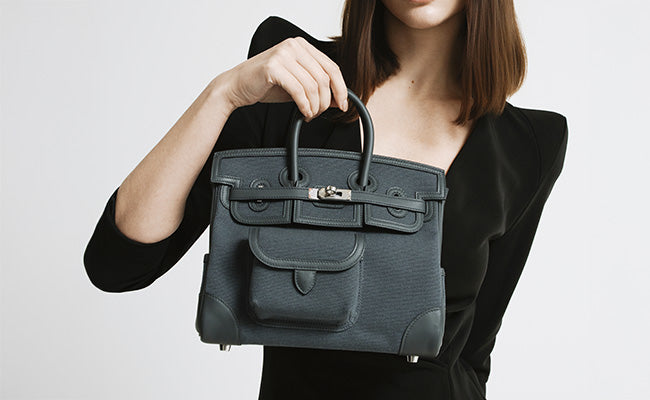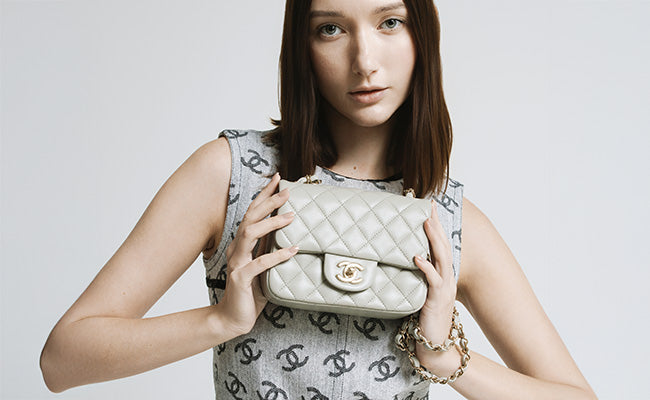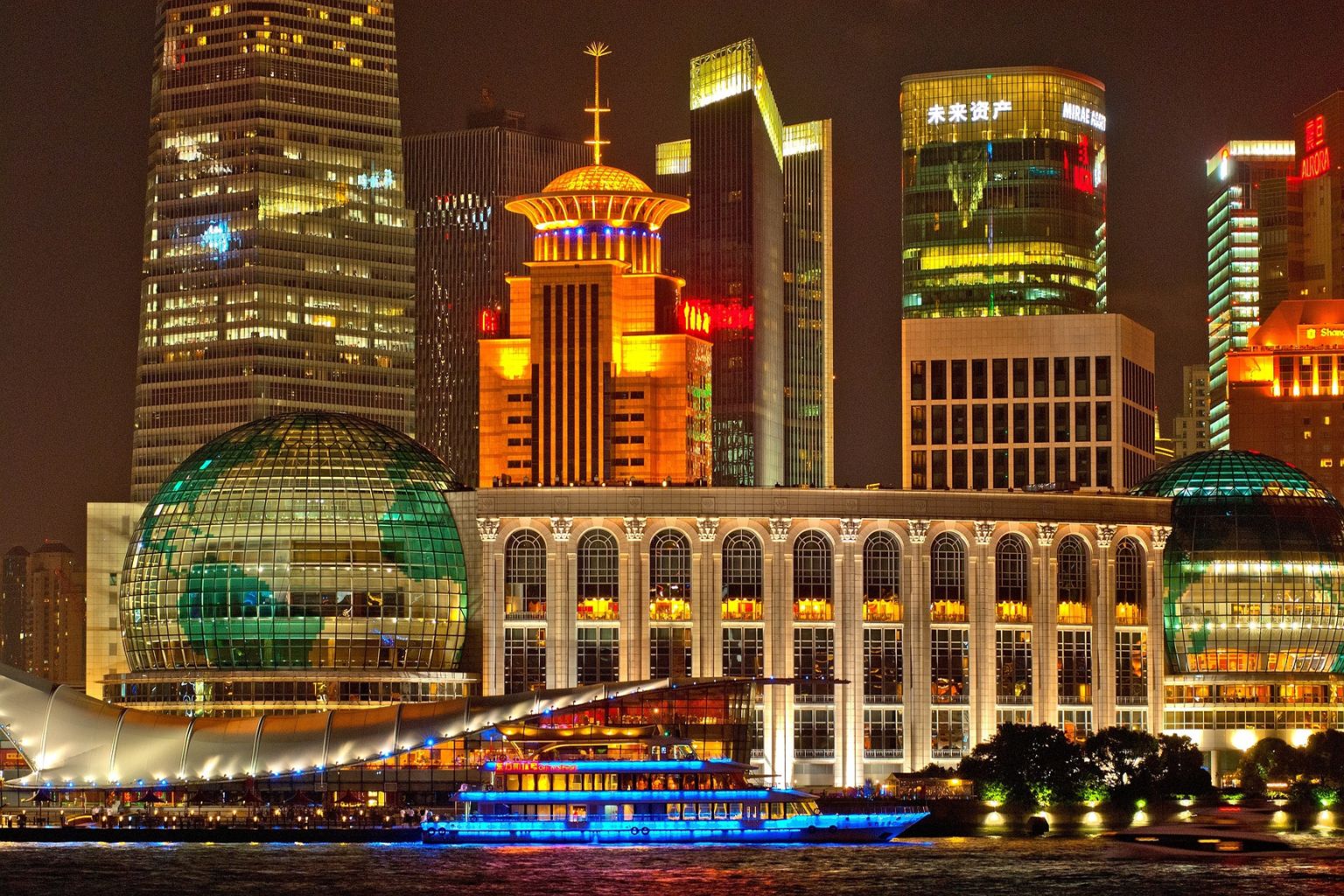
Pricing Psychology: Anchors, Rarity Signals, and “Full Set” Premiums
Check out our Hermès collection and Birkin bags!
Why do we shell out $15,000 for a Birkin when a similar leather bag costs $200? The answer’s tangled up in three psychological pricing tricks that luxury brands wield expertly.
Anchoring effects, rarity signals, and "full set" premiums explain why we make wild-sounding purchases, and why these strategies are so good at prying open our wallets.
When Hermès releases just a few Kelly bags each year, they’re doing more than managing stock. They’re using psychological levers to make us crave exclusivity and status. None of this is by chance, it’s all built on decades of consumer psychology.
If you’ve ever wondered why some luxury goods cost so much, or noticed your own impulse to splurge, these pricing tricks are everywhere. Auction houses, tech companies, boutique hotels. They all play the same games with our sense of value.
Key Takeaways
- Anchoring makes us judge prices by the first number we see, not by any “real” value.
- Scarcity and limited runs create a sense of urgency that makes high prices feel justified.
- Bundling things as “full sets” taps into our need for completion, so we’ll pay more to get everything at once.
The Core Concepts of Pricing Psychology
Pricing psychology works through three big moves: anchoring, scarcity, and the allure of complete sets. Together, they twist our sense of what’s worth paying for.
How Anchoring Shapes Perceived Value
Anchoring happens when the first price we see becomes our mental yardstick. Even if it’s totally random, it colors every price we see afterward.
Luxury brands love this. Hermès might show off a $200,000 crocodile Birkin right next to a $15,000 leather one. Suddenly, that “basic” bag seems downright sensible.
Anchoring works by contrast:
- High anchor? Other prices look cheap.
- Low anchor? Everything else feels pricey.
- Multiple anchors? Our brains build price ladders.
Once we’ve got that anchor in our heads, it’s almost impossible to shake, even when we know it’s inflated.
The best anchors feel real, not pushy. Stores use everything from fancy lighting to white-glove service so you’re primed for sticker shock before you even see a price tag.
Understanding Rarity Signals in Luxury Goods
Scarcity flips a switch in our brains. If something’s hard to get, we want it more.
Hermès nails this with their quota system. You can’t just walk in and buy a Birkin. That hunt makes the bag feel like buried treasure.
Rarity signals include:
- Limited runs
- Waitlists and allocations
- Seasonal or regional exclusives
- Numbered editions
Social proof amps it up. Watching others chase the same thing makes us want it more.
But there’s a sweet spot, if it’s too rare, people give up. If it’s too common, nobody cares.
The Power of "Full Set" Premiums
We love having the whole package. People pay more for a complete set, even if they don’t need every piece.
It’s not just bundling. Full sets make us feel like we’re getting the “real” experience, and it saves us the headache of picking and choosing.
You see this with:
- Matched jewelry (watch, cufflinks, chains)
- All-in-one spa days or hotel packages
- “Ultimate” product bundles
- Tech ecosystems (iPhone, AirPods, MacBook)
That extra cost feels fine because we’re buying peace of mind, not just stuff.
Luxury brands often sell their full sets as curated experiences. The selection itself becomes part of the value, and suddenly the price jump feels justified.
Anchoring in Ultra-Luxury: Why Your Reference Matters
Walk into Hermès or browse an ultra-luxury site, and the first prices you see quietly rewire your brain. Those initial numbers, anchors, set the tone for every decision you make next.
How Initial Price Points Influence Buying Decisions
The $15,000 Birkin becomes your baseline. After that, a $6,000 Kelly looks like a steal. You can’t help but compare everything to that first big number.
This isn’t just a sales trick, it’s how our brains work. Studies show we adjust all our later decisions from whatever anchor comes first. Order matters, a lot.
Imagine you’re in a boutique and the first thing you see is a $45,000 Himalaya Crocodile Birkin. Suddenly, the $8,000 Constance feels almost reasonable.
Luxury brands know exactly what they’re doing. They put the priciest stuff front and center, not because they expect you to buy it, but because it makes everything else seem affordable.
We’ve seen shoppers who freaked out at $12,000 bags slowly warm up after seeing $25,000 options. That first anchor totally shifts their idea of “normal” spending.
Strategic Use of Anchors in High-End Retail
Retailers choreograph these moments. Walk into any fancy boutique and you’ll notice: the most expensive pieces greet you first, setting the bar before you see anything else.
Sales associates get trained on this. They might casually mention a $30,000 limited edition before showing you the $18,000 bag you’re eyeing. Suddenly, your pick feels like a middle-of-the-road choice.
| Anchor Strategy | Example | Psychological Effect |
|---|---|---|
| High-end first | Show $40K piece before $15K option | Makes lower price feel reasonable |
| Limited edition mention | Reference rare $50K bag | Creates exclusivity anchor |
| Collection context | "Our entry-level exotic starts at..." | Reframes what's considered basic |
AI is now part of this, too. Some luxury shops use analytics to figure out which anchors work best for each customer. Eye tracking, click data, purchase history, it all feeds into how they present prices.
Online, the same thing happens. The first image and price you see on a website sets your expectations, just like in-store. Many luxury sites lead with their most exclusive items for this reason.
Rarity Signals: The Allure of the Unattainable
Scarcity turns ordinary things into must-haves. Limited runs create artificial hurdles that boost value, while true exclusivity works a little differently.
Creating Desire Through Limited Editions
Limited editions hit our FOMO and make a product feel special. If Hermès makes only 500 Birkins in a certain color, they aren’t just managing supply, they’re stoking demand.
We see scarcity and think “quality.” Even if it’s all staged.
Luxury brands use tactics like:
- Numbered editions (so you can say you have #47/500)
- Time-limited drops (buy now or miss out)
- Geographic exclusives (only in Tokyo or Paris)
- Invitation-only access (so you feel chosen)
Brands often pair scarcity with a story. A limited-edition watch might mark a historic event or use rare materials. Suddenly, the limited run feels meaningful, not just manipulative.
This works best with stuff you can show off. You might not care if your moisturizer is rare, but a unique bag? Everyone notices.
Rarity Versus Exclusivity: What Truly Drives Demand?
True rarity isn’t the same as manufactured exclusivity. Vintage Chanel bags are rare because time made them scarce. Limited editions are exclusive because brands decided to cap the numbers.
Both fuel demand, but in different ways. Rarity attracts collectors and investors. Exclusivity draws in people chasing status.
Real rarity:
- Can’t be reproduced
- Grows more valuable over time
- Limited by nature or history
- Has real backstory
Manufactured exclusivity:
- Could be mass-produced, but isn’t
- Value depends on hype and brand control
- Limited by business choice
- Signals status right now
The best luxury pieces mix both. A limited-run Hermès bag in rare crocodile skin? That’s natural scarcity plus an artificial cap.
How Museums Preserve and Signal Rarity
Museums get this better than most. They make scarcity desirable by showing why objects matter.
Curators add context, turning rare things into treasures. A 500-year-old textile isn’t just old, it’s valuable because of its story and craftsmanship.
Museums use strategies like:
- Provenance docs (the story boosts value)
- Expert authentication (trust matters)
- Storytelling (explains the price tag)
- Conservation (keeps things pristine)
Luxury brands borrow these tricks. High-end shops now display rare items like art, with info cards and perfect lighting.
"Full Set" Premiums: The Thrill of Completing the Collection
Full set collecting lights up our brains. The urge to “finish” a set makes people pay way more for bundles. Memory and nostalgia just crank things up even further.
Psychology Behind Full Set Collecting
Full set collecting taps into our need for closure, the same thing that makes us binge TV shows or hunt every Pokémon. Incomplete sets bug us.
See a Birkin with its original box, dustbag, receipt, and clochette? That’s the “completion effect.” Our brains actually reward us for finishing the set.
It’s not just bags. Card collectors will pay more for a full set, even if the rarest card is worth more by itself. The set is the prize.
What’s really going on:
- Completion bias: We hate gaps
- Loss aversion: Missing pieces feel like a loss
- Status: Full sets show commitment
- Control: Owning everything feels satisfying
Memory cements this. We remember complete sets as one big, valuable thing, not a pile of parts. A full Hermès set becomes a single, luxury experience.
Scarcity makes it even sweeter. Most people lose the packaging, so finding a complete set is tough. That makes the reward stronger.
How Sellers Maximise Value With Bundling
Sellers know bundling boosts perceived value. A Kelly bag at $8,000 can jump to $11,000 as a “full set.”
How they do it:
- Present everything as a single, unified package
- Use original packaging to sell the whole experience
- Hype how rare a complete set is
- Show “savings” versus buying items one-by-one
Presentation is everything. Sellers lay out the box, ribbon, dustbag, docs, all together. That visual completeness triggers our urge to finish the set.
| Bundle Component | Individual Value Add | Set Value Add |
|---|---|---|
| Original box | $200-500 | $1,000-2,000 |
| Receipt/docs | $500-800 | $1,500-3,000 |
| Dustbag | $100-300 | $500-1,000 |
Timing matters, too. Sellers often wait until they’ve got a full set before listing. Auction houses see 25-40% higher prices for complete Hermès bundles.
Authentication is easier with all the original pieces, so buyers feel safer and are willing to pay more.
The Role of Memory and Nostalgia in Collection Value
Memory turns purchases into stories. That orange Hermès box? It’s not just packaging, it’s a time capsule.
Collectors talk about unboxing as a big deal. The ritual, peeling off the ribbon, lifting the lid, smelling the leather, creates vivid, emotional memories.
What makes memories stick:
- Sensory details: Texture, scent, color
- Rituals: The way you open and store things
- Emotional moments: The thrill of buying, the pride of owning
- Story arc: From hunting to owning
Those memories get more valuable over time. A Birkin bought years ago with all the trimmings isn’t just a bag, it’s a piece of your own story.
Nostalgia smooths out the rough bits. That stressful waitlist? It becomes a badge of honor. The price pain morphs into pride.
Complete sets are better memory triggers than loose items. Seeing everything together brings back the whole experience of buying and owning.
Iconic Examples of Full Set Premiums in Fashion
Hermès pretty much sets the standard for full set premiums, though plenty of other luxury brands play the same game. For example, a Birkin 25 in Rose Gold recently fetched $16,800 as a complete set, while the same bag alone went for $12,500, a 34% jump just for the extras.
A few eye-opening cases:
- Chanel 2.55: All the original packaging can bump resale value by 15-20%
- Louis Vuitton Artist Collaborations: Full presentation boxes? Expect to pay 25-35% more
- Rolex Submariner: Having the box and papers adds $2,000-4,000 to $8,000 watches
Limited editions? The premiums get wild. The Hermès Himalaya Birkin, with every scrap of documentation, has gone for 60% more than “bag only” versions at auction. Collectors treat a full set like it belongs behind glass at a museum.
Vintage pieces show how scarcity ups the ante. A 1990s Kelly with its original box and receipt might sell for double the price of the same bag without the extras, mainly because finding a full vintage set these days is close to impossible.
Here’s what recent auction numbers look like:
| Year | Birkin 30 (Bag Only) | Birkin 30 (Full Set) | Premium |
|---|---|---|---|
| 2022 | $12,000 | $15,600 | 30% |
| 2024 | $14,500 | $19,800 | 37% |
With authentication worries on the rise, collectors see complete sets as safer bets and better long-term investments.
Human Factors and Social Influences on Pricing Psychology
Throw more people into the mix and pricing gets even trickier, especially with luxury goods. Team decisions and celebrity influence can push prices up and shape the way we buy ultra-luxury items.
How Teams Influence Group Buying Decisions
When a group decides what to buy, some odd but predictable things happen, luxury brands know this and take full advantage. Research suggests that teams lean toward pricier options, partly to avoid risk and partly to show off.
Take a corporate team picking out gifts for VIP clients. They’ll almost always go with a brand like Hermès. Picking something less known feels risky, who wants to get blamed for skipping the Birkin, even at $15,000?
Team buying gives brands a few clear advantages:
- Diffused responsibility: High prices don’t feel so personal when everyone’s involved
- Status signalling: The group gets to show off its taste (and budget)
- Risk aversion: Teams stick with established, premium brands to play it safe
This isn’t just theory. You see it again and again in group gifting and luxury purchases. The team dynamic wipes out individual price sensitivity and replaces it with a sort of collective brand loyalty.
Celebrity Endorsements and Social Proof in the Ultra-Luxury Market
Celebrity pull works a bit differently at the ultra-luxury level. Forget paid ads, real celebrity ownership packs way more punch than any sponsorship.
Think about Jane Birkin and her namesake bag, or those paparazzi shots of A-listers with their Hermès collections. That’s social proof money can’t buy. It makes the sky-high prices seem justified, if they want it, it must be worth it.
Here’s how the celebrity effect plays out:
- Scarcity validation: If even celebrities struggle to get one, it must be rare
- Lifestyle aspiration: Owning what they own makes us feel closer to their world
- Quality assurance: If it’s good enough for them, it’s got to be top-tier
The best celebrity endorsements are the accidental ones, the unposed, personal moments that end up everywhere.
Digital Innovations, AI, and the Future of Pricing Signals
Digital tech is shaking up how luxury brands broadcast value and rarity. AI now tweaks prices in real time, and blockchain is making authenticity checks way harder to fake.
AI-Powered Dynamic Pricing in Luxury Retail
Luxury brands are changing their pricing playbook thanks to AI. These days, systems crunch data on demand, inventory, and even how shoppers behave, instantly.
Hermès and others are testing out algorithms that watch resale sites like Vestiaire Collective and The RealReal to track what bags really go for.
But it’s not just about supply and demand. Machine learning models now consider seasonal shifts, celebrity buzz, and even social media chatter to suggest price changes.
There’s a catch, though. Leaning too hard on algorithms can kill the mystique that makes luxury feel special.
Some brands try personalized pricing tiers for VIPs, factoring in past purchases and loyalty. The tech helps, but it can’t replace the human touch that sparks real desire.
Technology's Impact on Authenticity and Provenance
Blockchain is quickly changing how we prove luxury items are legit. Digital certificates now offer unbreakable proof of a product’s journey from factory to resale.
Smart tags inside products create digital twins, logging every owner. Imagine every Birkin bag with a digital biography on the blockchain.
NFC chips let you check authenticity on your phone, no need for a third-party expert. This tech helps fight fakes, a massive problem for the industry.
But rolling it out isn’t simple. Older inventory often doesn’t have digital tracking, so there are gaps.
Younger buyers seem to love digital verification, while more traditional collectors still trust the old-school methods.
ASP: Influencing Collections and Pricing in the Digital Age
Average selling price (ASP) analytics have become a big deal for understanding luxury markets. Digital platforms now show what things actually sell for, not just the sticker price.
AI tracks dynamic ASP across boutiques, retailers, and resellers at once. You can literally watch Hermès prices shift in real time.
This kind of transparency changes how collectors shop. Savvy buyers use ASP data to spot deals and time their purchases.
Brands notice too. If resale prices consistently beat retail, it’s a green light to raise list prices.
Digital marketplaces have blown open access to ASP info. What used to be insider knowledge is now out there for anyone.
Pricing is more efficient, and those secret bargains are harder to find as everyone gets clued in.
Frequently Asked Questions
Here are a few questions that pop up all the time, proof that psychological pricing works its magic on even the savviest luxury shoppers.
How does the concept of 'limited edition' affect a buyer's willingness to purchase luxury items?
Limited editions mess with our heads. When Hermès drops just 100 of a special Birkin, suddenly it feels like a race. We start worrying we’ll miss out.
That urgency makes us justify the price. We know it won’t be around next week, so we act fast.
It works because scarcity makes us feel special. Owning something only a handful of people have? That’s the dream for a lot of collectors.
What's the deal with 'price anchoring', does it actually make us think we're getting a better bargain on designer goods?
Price anchoring absolutely shapes how we see value. Spot a $15,000 Chanel next to an $8,000 one and, weirdly, the cheaper bag starts to look like a deal.
Stores know this and put their priciest stuff front and center. Suddenly, everything else seems affordable, even when it’s not.
The anchor doesn’t have to make sense. A $50,000 crocodile Birkin? Suddenly the $25,000 leather version feels “reasonable,” though both prices are wild.
Why do luxury brands seem to charge a premium when offering items as a 'complete set'?
Complete sets tap into our love of convenience and the idea of getting it “just right.” When Louis Vuitton bundles a bag, wallet, and key holder, it feels like a curated package.
Brands charge more because they know we’ll pay to skip the hassle of picking out each piece. We buy the whole look, no second-guessing.
Sets also trick us into thinking we’re getting a deal, even if we don’t need every item.
In what ways do luxury brands create an aura of exclusivity to justify higher price points?
Exclusivity is a whole strategy. Brands use waitlists, invite-only events, and make us build a purchase history before we can even sniff a Birkin. That way, buying feels like an achievement.
Limited store locations add to the mystique. If there’s just one Goyard boutique in the country, shopping there is an occasion.
They’d rather have empty shelves than discount a thing. The message? Their stuff is too special for sales.
Could you spill the tea on whether 'rarity signals' in marketing actually influence consumer behaviour in the high-end market?
Rarity signals totally work, and luxury brands know exactly what they’re doing. Phrases like “VIP clients only” or “just 50 pieces worldwide” make us feel like insiders.
It’s classic scarcity principle in action. The harder it is to get, the more we want it, even if the rarity is a bit of a marketing trick.
It hits harder in luxury because we’re already primed to believe in the magic. If Tiffany says something’s rare, who’s going to argue?
What tricks do retailers use to make us feel like we're snagging a deal, even when we're splurging on premium products?
Retailers love to play the "comparative anchoring" game, showing off the original price right next to the sale price. Spotting a Cartier watch with a tag slashed from $8,000 down to $6,500? It suddenly feels like you're saving money, even though, let's be honest, $6,500 is still a hefty sum.
Payment plans are another favorite. When a $3,000 handbag gets split into four payments of $750, it somehow tricks your brain into thinking the purchase isn’t such a big deal. Feels a lot lighter on the wallet, at least in the moment.
Then there are the bundled perks. Maybe you get free engraving, complimentary repairs, or some kind of VIP access to future collections. Those little extras create the illusion that you’re getting more than just the product, like you’re part of some exclusive club.




